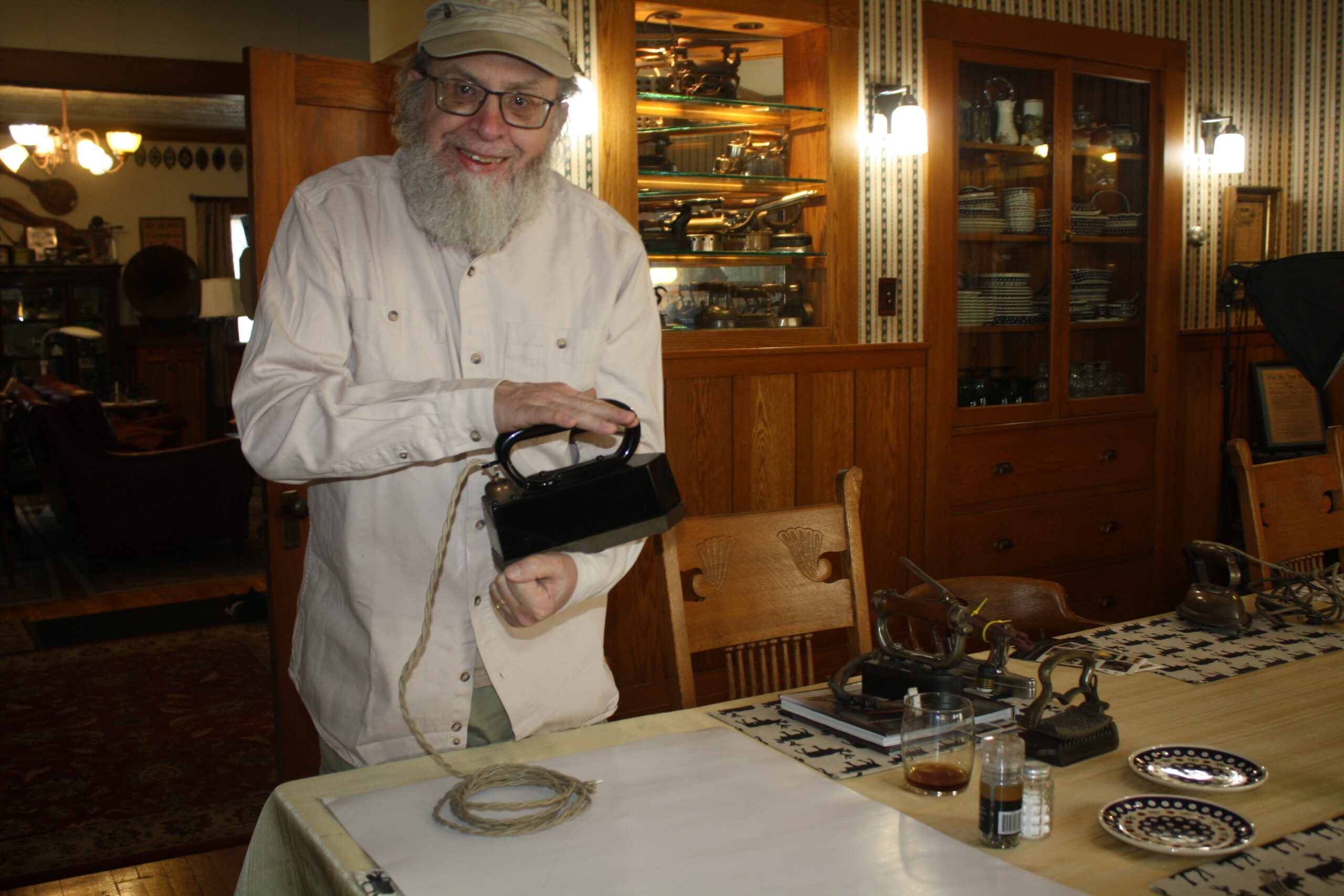
CARIBOU, Maine – Kevin McCartney has been collecting old irons for most of his life, but it was not until last week that he obtained one of the earliest and rarest electric irons in U.S. history.
Kevin and his wife Kate McCartney own The Old Iron Inn in Caribou, named for Kevin’s collection of over 500 antique irons, many dating back to the 1800s, including some that ran on gasoline, natural gas, charcoal and kerosene. In 2020 he launched a YouTube series, “Kevin Talks Irons,” which now has nearly 100 videos and more than 30,000 views.
But McCartney’s collection didn’t feel complete until he acquired an 1891 Carpenter-Nevens Electro-Heating Company flat iron, one of only five such irons made by that company known to still exist internationally.
McCartney’s friend and iron historian, Jay Raymond, discovered the iron two weeks ago through a fellow collector and immediately called McCartney. McCartney did not disclose the final sale price.
“It’s one of the earliest electric irons or at least the earliest type,” said McCartney, 69, who retired in 2023 after over 30 years as a geology professor at the University of Maine at Presque Isle.
The 20-pound black Carpenter-Nevens iron is one that a tailor most likely would have used for mending clothes due to its enormous weight. Patented on Feb. 4, 1891, the iron includes a long, coiled rope that someone ironing would have plugged into an electrical outlet.

Back then most houses, including Kevin and Kate McCartney’s 1913 two-story bed and breakfast, had only a few electrical outlets scattered throughout, compared to modern houses that have outlets in all rooms.
And unlike later irons, the early Carpenter-Nevens did not have a gadget for controlling the iron’s temperature, McCartney said.
“You had to work very quickly as the iron heated up and not get distracted,” McCartney said. “If you got a phone call and forgot, the iron could start a fire.”
In that era, most people viewed electric power with suspicion because the concept was so new, McCartney said. Electric irons were not widely manufactured and purchased in the U.S. until the 1920s and 30s, but once that type of ironing became popular, no one looked back.
Neither did McCartney once he bought his first antique gas iron for $1 as an eighth grader while antique shopping with his parents.
“It was something small enough for me to take home. I started picking up a few irons here and there for 10 to 15 years, but I mostly collected fossils,” McCartney said. “As I got closer to becoming a geologist, I collected more irons because I studied fossils all the time.”
Today, McCartney’s collection includes irons of all types, such as “fluting irons” that pressed fluted ruffles on cuffs and collars, specialty irons for women and men’s hats and the “Mrs. Potts,” flat irons patented in the early 1870s by Florence Potts, one of the only known female inventors of her day.
McCartney has decided to one day offer the Carpenter-Nevens electric iron to the Smithsonian Institution in Washington D.C.
“If they displayed it, it would be the oldest one in their collection,” McCartney said.
For now, McCartney will get busy making a video to showcase his latest discovery and finding new ways to educate folks on the iron’s history.
“I’m fascinated by the sheer variety of irons and trying to explain all their configurations,” McCartney said. “I’ve always wanted to write a book about irons, but I think [this collection] is my way of writing that book.”







